Potrebujeme váš súhlas na využitie jednotlivých dát, aby sa vám okrem iného mohli ukazovať informácie týkajúce sa vašich záujmov. Súhlas udelíte kliknutím na tlačidlo „OK“.
ASTM G37-98(2011)
Standard Practice for Use of Mattsson´s Solution of pH 7.2 to Evaluate the Stress- Corrosion Cracking Susceptibility of Copper-Zinc Alloys
Automaticky preložený názov:
Štandardná prax pre využívanie Mattsson 's roztoku o pH 7,2 až Vyhodnotiť stres korózne praskanie citlivosti Medené a zinkové zliatiny
NORMA vydaná dňa 1.2.2011
Informácie o norme:
Označenie normy: ASTM G37-98(2011)
Poznámka: NEPLATNÁ
Dátum vydania normy: 1.2.2011
Kód tovaru: NS-57660
Počet strán: 4
Približná hmotnosť: 12 g (0.03 libier)
Krajina: Americká technická norma
Kategória: Technické normy ASTM
Kategórie - podobné normy:
Anotácia textu normy ASTM G37-98(2011) :
Keywords:
accelerated stress-corrosion cracking test environment, continuous immersion, copper-ammonium sulfate solution, copper-zinc alloys, Accelerated aging/testing--corrosion, Copper corrosion, Copper-zinc, Corrosion--stress-corrosion, Mattsson&apos,s solution, Stress corrosion cracking (SCC), ICS Number Code 77.060 (Corrosion of metals), 77.120.30 (Copper and copper alloys)
Doplňujúce informácie
| Significance and Use | ||||
|
This test environment is believed to give an accelerated ranking of the relative or absolute degree of stress-corrosion cracking susceptibility for different brasses. It has been found to correlate well with the corresponding service ranking in environments that cause stress-corrosion cracking which is thought to be due to the combined presence of traces of moisture and ammonia vapor. The extent to which the accelerated ranking correlates with the ranking obtained after long-term exposure to environments containing corrodents other than ammonia is not at present known. Examples of such environments may be severe marine atmospheres (Cl−), severe industrial atmospheres (predominantly SO2), and super-heated ammonia-free steam. It is not possible at present to specify any particular time to failure (defined on the basis of any particular failure criteria) in pH 7.2 Mattsson's solution that corresponds to a distinction between acceptable and unacceptable stress-corrosion behavior in brass alloys. Such particular correlations must be determined individually. Mattsson's solution of pH 7.2 may also cause stress independent general and intergranular corrosion of brasses to some extent. This leads to the possibility of confusing stress-corrosion failures with mechanical failures induced by corrosion-reduced net cross sections. This danger is particularly great with small cross section specimens, high applied stress levels, long exposure periods and stress-corrosion resistant alloys. Careful metallographic examination is recommended for correct diagnosis of the cause of failure. Alternatively, unstressed control specimens may be exposed to evaluate the extent to which stress independent corrosion degrades mechanical properties. |
||||
| 1. Scope | ||||
|
1.1 This practice covers the preparation and use of Mattsson's solution of pH 7.2 as an accelerated stress-corrosion cracking test environment for brasses (copper-zinc base alloys). The variables (to the extent that these are known at present) that require control are described together with possible means for controlling and standardizing these variables. 1.2 This practice is recommended only for brasses (copper-zinc base alloys). The use of this test environment is not recommended for other copper alloys since the results may be erroneous, providing completely misleading rankings. This is particularly true of alloys containing aluminum or nickel as deliberate alloying additions. 1.3 This practice is intended primarily where the test objective is to determine the relative stress-corrosion cracking susceptibility of different brasses under the same or different stress conditions or to determine the absolute degree of stress corrosion cracking susceptibility, if any, of a particular brass or brass component under one or more specific stress conditions. Other legitimate test objectives for which this test solution may be used do, of course, exist. The tensile stresses present may be known or unknown, applied or residual. The practice may be applied to wrought brass products or components, brass castings, brass weldments, and so forth, and to all brasses. Strict environmental test conditions are stipulated for maximum assurance that apparent variations in stress-corrosion susceptibility are attributable to real variations in the material being tested or in the tensile stress level and not to environmental variations. 1.4 This practice relates solely to the preparation and control of the test environment. No attempt is made to recommend surface preparation or finish, or both, as this may vary with the test objectives. Similarly, no attempt is made to recommend particular stress-corrosion test specimen configurations or methods of applying the stress. Test specimen configurations that may be used are referenced in Practice G30 and STP 425. 1.5 The values stated in SI units are to be regarded as standard. No other units of measurement are included in this standard. 1.6 This standard does not purport to address all of the safety concerns, if any, associated with its use. It is the responsibility of the user of this standard to establish appropriate safety and health practices and determine the applicability of regulatory limitations prior to use. (For more specific safety hazard statements see Section 8.) |
||||
| 2. Referenced Documents | ||||
|
Podobné normy:
Historická
1.6.2011
Historická
1.4.2012
Historická
1.4.2014
Historická
1.10.2010
Historická
1.5.2014
Historická
1.3.2008
Odporúčame:
Aktualizácia technických noriem
Chcete mať istotu, že používate len platné technické normy?
Ponúkame Vám riešenie, ktoré Vám zaistí mesačný prehľad o aktuálnosti noriem, ktoré používate.
Chcete vedieť viac informácií ? Pozrite sa na túto stránku.


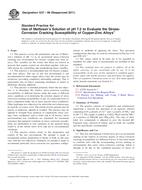
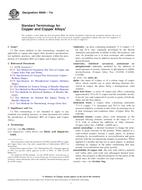 ASTM B846-11a
ASTM B846-11a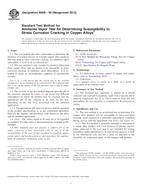 ASTM B858-06(2012)..
ASTM B858-06(2012)..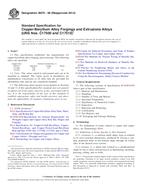 ASTM B870-08(2014)..
ASTM B870-08(2014)..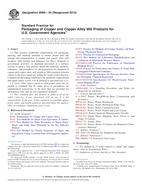 ASTM B900-04(2010)..
ASTM B900-04(2010)..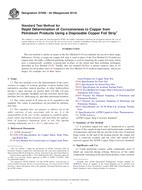 ASTM D7095-04(2014)..
ASTM D7095-04(2014)..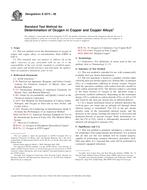 ASTM E2575-08
ASTM E2575-08
 Cookies
Cookies
